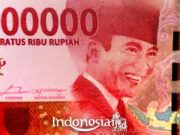The Hakka (Kèjiā 客家) are one of the largest Han Chinese groups in the People’s Republic of China. Hakka were the last Han group to migrate south from North China gradually since the 4th century AD due to natural disasters, wars and conflicts. Migration of Hakka out of China has also occurred on a large scale, so that now the Hakka community is spread across various provinces in China and countries in the world. The Hakka people are one of the largest groups of overseas Chinese.
Initially, the term “Hakka” did not refer to a particular group. The term “ke” (客) or “immigrant” first appeared in population registration records during the Song Dynasty to refer to immigrants who had left their area and lived in various parts of the country.
The term “Hakka” comes from the Cantonese term that first used it as an unfriendly term. Because they are present in a new environment, local people call them “Hakka” or “guests”. This term was later accepted by the Hakka as the name of their group.
The origins of Hakka are still debated by historians due to repeated displacement, while no written records have been found. Luo Xiang-Lin based the theory of his investigations on records of the Hakka families / clans, some of which date back to the Song dynasty. They have links to other Chinese subgroups who moved to southern China. Massive displacement of the Han tribe including Hakka from northern China occurred repeatedly due to various reasons such as wars or natural disasters. Historians have concluded their migration was gradual. Some estimate the earliest Hakka migration to have occurred since the Qin Dynasty period, during the reign of Emperor Qin Shihuang where there had been large population movements from Zhong Yuan, the central mainland which is said to be the origin of the Chinese, which now includes Henan, Shaanxi, Shanxi , Hebei and Shandong. Meanwhile, Luo Xiang Lin predicts the 4th century AD as the beginning. Foreign researchers such as Huntington and Campbell formulated the “3 wave displacement theory” which began in the 4th century AD While D. Ball and EJ Eitel at the end of the 19th century formulated the “5 wave theory” which Luo Xiang-lin finally refined into classical theory of Hakka migration. Meanwhile, Mary Erbaugh formulated the “4 waves theory” starting from the Tang dynasty.
The Five Wave Theory
The First Wave (317-879), when China was invaded by the Xiongnu and the capital of the Jin Dynasty (265-420) was moved from Luoyang to Chang’an (311). This movement was followed by an exodus of people leaving their homes across the Yangtze to Hunan, southern Hubei, Anhui, Zhejiang and the Gan River Valley in Jiangxi, and possibly mingling with the She tribe in the south (Heggheim).
However, historian Mary Erbaugh according to A. Heggheim in Three Cases does not agree with this first wave, especially because there is no written record at all.
The Second Wave (880-1120) occurred at the end of the Tang Dynasty period, when the Huang Chao Rebellion occurred. Tang residents of Anhui, Henan and Jiangxi moved south to Fujian and northern Guangdong. Perhaps that is why the Fujianese refer to Chinese people as Tang Lang (meaning: Tang people).
The Third Wave (1127-1644) occurred during the Song Dynasty, the arrival of the Jurchens forced the Han tribes to move south until finally, Emperor Gaozong made it through the Yangtze River and founded the Southern Song Dynasty in 1127. Another shift occurred when the Mongols controlled China in this period.
Written records of the Hakka clans date back to the Song dynasty so this exodus is the most reliable.
The Fourth Wave occurred at the beginning of the Qing Dynasty (1644-1911). Due to the rapidly increasing population, reduced agricultural land and pressure from the Qing government, the Hakka people living on the southern coast of Fujian and Guangdong, moved inland to Guangxi, Hunan and Sichuan, in addition, many moved to Taiwan, Southeast Asia, Africa, Hawaii. and the Caribbean.
The Fifth Wave (1867) occurred after the Hakka went to war with the inhabitants of Guangdong, the Punti people and after the suppression of the Hakka-led Taiping Rebellion, Hong Xiu-chuan. Starting from this period the Hakka people have left Guangdong to Hainan, Southeast Asia and countries in South America.
In the 17th century, the Qing Dynasty government ordered the evacuation of residents of the coastal areas of Guangdong and Fujian to prevent piracy and smuggling by supporters of Zheng Chenggong, Ming Dynasty servants who had crossed into Taiwan. After Taiwan was conquered in 1863, the government withdrew the order to evacuate, but few people returned to resettle the vacated areas. Therefore, the government provides incentives for residents who occupy the area. This opportunity is taken advantage of by people who come from areas that are overpopulated or affected by natural disasters. Most of them are Hakka people. Their arrival into the populated area earned them the nickname “Hakka” by the Puntis or “Khek” by the Hoklo, both of which mean “guest” or “migrant”. In the late Qing period, Hakka’s migration became increasingly sporadic as a result of the defeat of the Taiping Rebellion spearheaded by the Hakka people against the Manchu government as well as conflicts with indigenous people in the Hakka-Punti War in Guangdong, causing thousands of Hakka refugees to migrate to Hainan, Taiwan, Southeast Asia, Hawaii and so on. .
Identity that shows the main characteristics of Hakka, among others, is shown by the use of spoken language (Hakka Language) as well as Hakka traditions and culture. Hakka is not included in the 56 ethnic groups in China, thus the designation of ethnicity, race, or nation is not correct. To complement this vague categorization, historians have assigned the Hakka category to the “lineage” (minxi) of the Han Tribe (Kejia Minxi).
At first the Hakka was often looked down upon by other Han groups and was even considered less civilized because most of them were landless and poor. However, the Hakka people maintain their identity and historical origins from North China, which is the center of Chinese culture, so that they consider them pure Chinese who inherited a high civilization. The Hakka people hold true beliefs from the north. Even though they have moved and settled in various other areas in China, the Hakka people still retain their language and culture due to the habit of moving in large groups and settling together in new places to isolate themselves.
In southern China, Hakka people are the last settlers on other people’s land and often have to survive on poor soil. They are considered lowly and unacceptable, thus forming resilient, courageous, persistent and steadfast traits. The conflict with the indigenous people causes them to become a community that has high solidarity and is closely related. Men have tough tasks outside the home, while women work hard tending the house and fields. Different from other groups of Chinese women, Hakka women refuse to tie their feet because they are not suitable for their roles and jobs. Therefore, they are often ridiculed ugly and big. They are independent and have the same position as men. The refusal to tie the feet is probably due to poverty reasons. Elderly hakka women often play a role in household decisions. Apart from negative perceptions, other Chinese groups also consider Hakkas to be honest, hardworking and simple. The constant conflict with the indigenous people has made the Hakka people dare to take the risk of leaving their place of origin and immigrating to various parts of China and abroad.
The area of origin of the Hakka people can be broadly divided into four main areas, namely: Meizhou, Ganzhou, Tingzhou and Huizhou. Meanwhile, the Shibi area, which borders Jiangxi Province, in Ninghua County, Fujian Province, is the center of the formation of Hakka, and has been nicknamed “Hakka ancestral land.”
Meizhou
Meizhou is located in the northeast region of Guangdong Province, east by Fujian Province, south by Chaozhou, Jieyang and Shanwei. Meizhou is nicknamed “the capital of Hakka”.
Ganzhou
Ganzhou which has another name “Qian” is the entrance to Jiangxi Province from the southeast. The area is flanked by the Provinces of Fujian, Guangdong and Hunan.
Tingzhou
Tingzhou or Minxi, is a Hakka residential area in the western part of Fujian Province. Tingzhou is divided into Changting, Liancheng, Wuping, Shanghang, Yongding, Ninghua, Qingliu and Mingxi counties.
Hakka (Hakka-fa; 客家 話) is one of the seven main languages in the People’s Republic of China. Although separated from each other, speakers of Hakka who have different accents and dialects can speak to each other. Wherever they move, the Hakka people still maintain culture, especially language. The Hakka language is closer to Mandarin than other Chinese languages. Hakka Meixian (Moiyan Hakka-fa; 梅县 客家 話) consists of 6 tones being the standard language.
Contact with different speech groups in the places they occupy resulted in accents and dialects influenced by the local language. In southern Jiangxi, there are Hakka speakers who are influenced by the Gan language, in addition there are Hakka-Fuxi (Western Fujian), Hakka-Tiochiu, Raoping, Hong Kong, Guangxi, Siyen (Taiwan), Chuanxiang (Hunan-Sichuan) and Hainan Island. In addition, other variants appear in Southeast Asia which are generally a collection of speakers from the main areas of China, among others, “Ngai” (Tonkin bay area, Vietnam), Malaysia (Kuala Lumpur, Sabah, Sarawak), Thailand, Aceh, Bangka- Belitung, Java, West Kalimantan and Timor. Other Hakka speakers are found in Mauritius, India, Jamaica, Suriname, England, Canada and so on. In Indonesia, the variety of Hakka languages was created as a result of association with ethnic Nusantara.
The residence of the Hakka people is known as the Tulou (客家 土楼 earth house). Tulou consists of various types of shapes, some are round, square, U shape, half round, octagonal shape like bagua shape and so on.
Source : wikipedia






























